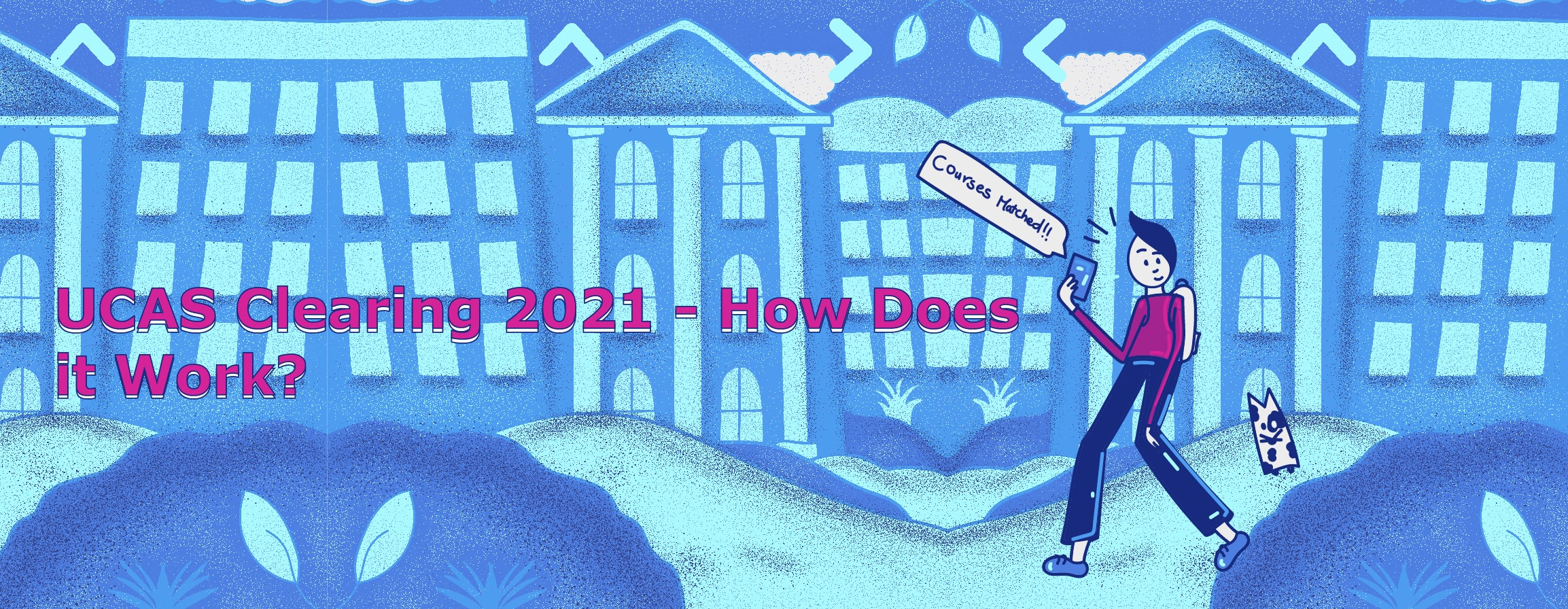UCAS Clearing 2021: How It Works?
University Life
11 June, 2021
|
3 mins read
By Hadeel Hossam
Share

UCAS Clearing 2021: How It Works?
University Life
11 June, 2021
|
3 mins read

By Hadeel Hossam
Share
Applying to university is not only a huge, life-changing decision, and it’s also a long process that needs attention to detail and patience. One of the things every student worries about after this process is over is not getting into the university or course that they hoped for. However, if your results are not enough for your course, it’s not necessarily the end of the line! Certain universities go through a process known as Clearing for these cases in particular, and here’s all you need to know about how it works.
What Is Clearing?
UCAS Clearing is a yearly service that matches students with university courses that are yet to be filled. It runs between July and October and is considered a second chance for students to find a place in a university. Any student is eligible to enter clearing if they do not hold any offers from universities or colleges; however, they need to apply after the 30th of June.
Why should you consider it?
The Clearing Process is put in place specifically for students who did not get the required grades in the A-levels (or BTEC, Scottish Highers or International Baccalaureate) exams for the course they chose. If you made a UCAS Undergraduate application and did not receive any university offers, you still have a chance during clearing to find a place on a similar course either at the same university you chose before or a different one. Last year, out of the 52,000 students who applied through UCAS, over 70,000 students were accepted through USAC Clearing, making it 13.6% of all accepted students in 2020!
The Clearing Process
For UCAS clearing, you need to search for the available courses on Ucas.com first, then check entry requirements. Afterwards, contact universities to discuss the available courses and if your application can be considered.
Make a list of possible course choices and apply for one choice at a time. Note that you can’t add another choice once one has already been accepted. You have to directly contact the university to cancel your place so you’re able to apply to another choice through Clearing.
With each possible course choice, you will be given a course code and institution code. Once you settle on a course, you will need to add your clearing choice codes on Track.
The last date for your final clearing choice is 19th October which is also the last date a university or college can accept a student through Clearing. You will find out which universities are included in the 2021 clearing once it opens on the 5th of July. While you can apply right away, most students wait to receive their exam results. This year, the A-Level Results Day and SQA Results Day are both on the 10th of August.
There is an ‘Adjustment’ process for students who received better grades than expected and want to apply to a different course or uni. It opens on the 19th of August and closes on Tuesday 31st of August. You can register for Adjustment by logging in to your UCAS Track account. Don’t worry, the original offer you got will be secured until you find a new course and accept an offer.
What Is UCAS Self-Release?
UCAS Clearing self-release allows students to decline the place at a university they hold and release themselves into Clearing. Be careful while taking this step and make sure you have a verbal offer from another university. All you need to do is log into your UCAS Track account and choose ‘decline my place’ next to the course you want to be released from.
How To Prepare For UCAS Clearing
To get the result you hope for out of UCAS clearing, you need to be fully prepared. Even if you feel confident about getting good results, it won’t hurt to have a backup plan just in case. It’s not a secret that the process itself is very hectic so getting a head start is highly advised. Try to research all the possible courses and universities that you are willing to apply to ahead of time instead of waiting for result day to see what else is still available.
Also, revisit your personal statement and revise it one final time before applying. It will remind you of skills and experiences you highlighted, helping you communicate them to universities during Clearing. You can also start preparing for your Clearing phone interview because you will be asked several questions similar to your admissions interviews. Remember to have all your information and documents ready and easily accessible including your UCAS number, Clearing number, and A-level/GCSE grades.
That’s pretty much all there is to know about UCAS Clearing and how it works. Even though it can be a stressful and hectic process, it gives you the chance of having several university and course options available to choose from. If you end up not getting what you hoped for, don’t sweat it, consider taking a gap year and resitting your exams the following June to get better grades. If you’re worried about getting back to the hang of things after taking a gap year, check out our blog on 7 Tips to Reorganise Your Life After a Gap Year.
University Life
By Hadeel Hossam
Share
University Life
By Hadeel Hossam
Share

